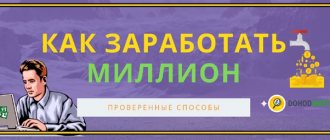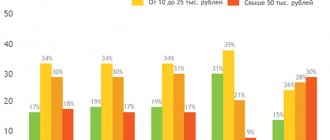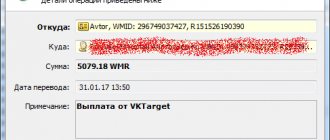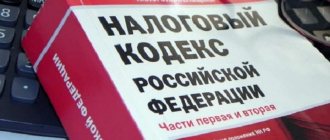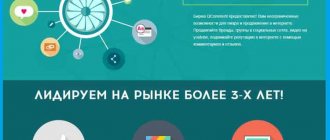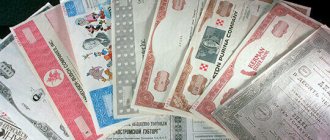How do IIS deductions work?
An individual investment account (IIA) is a regular brokerage account with additional tax benefits. There are two types of IIS:
- the first type (A) is an annual tax deduction from the contribution or “up to 52,000 ₽ for everyone, for free”;
- the second type (B) allows you not to pay taxes on investment profits - not as profitable as real money, but still nice.
Considering the chronic decline in deposit rates, this is a good opportunity to get a double-digit return, practically guaranteed by the state, even for those who have not immersed themselves in investments beyond a bank deposit.
Is it worth opening an IIS?
The answer to this question is not as simple as it seems. An individual investment account is a kind of slow cooker, and the result will depend on the quality of the products you put into it. Do you need a slow cooker? Yes, if you know how to cook. Not if a mouse hangs itself in your refrigerator. Yes, if you know a simple stew recipe and are willing to wait three years for it to be ready. Not if dinner is in an hour.
You can buy a multicooker solely for the sake of a luxurious cashback from the state, but without a clear plan you risk getting a headache instead of profitability.
Let's assume that you have a general understanding of cooking and more or less understand what you want to cook (you have a goal). And now you’re wondering whether you need a multicooker (that is, you’re studying the tools). Here's what you should know about IIS to make a decision:
1. To open an account, you must be a tax resident of the Russian Federation, that is, be in Russia for at least 183 days a year. If, for example, you vacation in the Maldives for more than six months a year, an IIS will not be opened. But it is not necessary to be a citizen.
2. IIS is opened for at least 3 years. The countdown of the period begins from the date of conclusion of the contract, and not from the moment of replenishment. Therefore, if you decide to open an account, don’t delay, you can deposit money later. The later you deposit them, the shorter the period of “freezing” in assets on the stock market will be.
3. IIS is ideal for “long” money. If you may need money soon, then it is better to use a deposit. The state provides tax benefits precisely because you are investing for the long term. If you withdraw funds earlier, you will have to return the deductions received and pay a fine. Some brokers allow you to withdraw coupons and dividends to a bank account without closing your IIS, but it is better to find out this option in advance.
4. To apply for a tax deduction, you must pay taxes. It is the personal income tax that is taken into account, so if you are self-employed, an individual entrepreneur, a mother on maternity leave, a non-working pensioner, a student, an unemployed person or a rentier living on dividends, you will not be able to use IIS type A. A B-type account will be available, exempt from income taxes. But its effectiveness for novice investors is questionable.
5. The maximum amount of annual contribution is 1,000,000 rubles. The top-up amount with which you can receive a tax deduction on a type A account is 400,000 rubles. The maximum for annual deduction is 52,000 rubles (or 156,000 for three years). You can only deposit rubles into an IIS.
6. To receive the maximum deduction, you must earn at least 400,000 rubles per year, or 33,333 rubles per month (this way you will pay 52,000 rubles in taxes and can take them back). If your official income is lower, then the possible tax deduction will decrease proportionally.
7. You can have only one IIS and choose only one type of tax optimization for it - either A or B. It is not necessary to decide immediately; you can do this by the end of the term, after weighing all the pros and cons. But as soon as you receive the first deduction, the IIS will automatically be recorded in type A.
8. If you already receive a tax deduction (for example, for the purchase of a home or interest on a mortgage), then you will no longer be able to apply for a deduction under the IIS for the same periods, only if you have a high salary: the state will not return more money than you gave it. .
9. IIS of any type entails costs in the form of commissions and taxes. For example, you will have to pay 13% on all dividends received and on some bond coupons. But you will also have access to additional tax benefits that will increase the return on your investment.
10. Your funds will not be insured, like on a bank deposit, but this is not as scary as it seems. You can choose conservative instruments on the stock market, for example OFZ. If the state refuses to pay its debts, which is unlikely, then the Deposit Insurance Agency is unlikely to be able to fulfill its obligations, so the risks are comparable.
11. The profitability of IIS strongly depends on what assets you acquire, in what time frame and with what frequency. You can often hear about “an additional annual return of 13% due to tax deductions,” but this is only relevant for the first year of using an IIS. If you do not invest money, but simply keep it in the account and do not replenish it, then the average annual return by the second year will be 6.5% per annum, and by the third - 4.3%. When investing, the average annual return also decreases, but remains decent. Arm yourself with Excel and calculate everything based on your personal deadlines, goals and plans.
12. You can invest in a wide variety of assets and securities: purchase shares, bonds and gold, ETFs, mutual funds and bmutual funds, structured products and assets of foreign companies, Eurobonds and currency. You will get access to most instruments through a broker on the Moscow Exchange; to shares of some foreign companies - only on the St. Petersburg Exchange. For trust management or specific mutual funds, you will have to contact a management company. Your options are limited to the instruments available on the Russian stock market, but their content can be international. So, you can buy ETFs for shares of foreign companies.
13. The most popular content of IIS among newcomers to the stock market is federal loan bonds (OFZ). They attract investors with predictability, low risk, government guarantees and, of course, a pleasant discount - no taxation of coupons paid twice a year.
How to make money on IIS
To earn money on IIS you must meet the following conditions:
- Be a citizen of the Russian Federation,
- Stays on Russian territory for at least 183 days. within the last 12 months. (be a tax resident of the country),
- Open an ISA and deposit money into it,
- The money must remain in the account for 3 years,
- Provide documents to the tax office or broker to receive a tax deduction.
Recommended reading: Oil company shares
There are 3 ways to make money on IIS, depending on the degree of risk:
- Just deposit money into your account and buy federal loan bonds with an average yield of 6-8% per annum.
This method is considered the safest, because... fulfillment of obligations is ensured by the state. The profitability of the IIS will be 20-23% per annum (13% deduction for personal income tax and 7-10% for bonds).
- Deposit money into your account and buy reliable shares with a good dividend yield and earn money by receiving dividends.
All you have to do is occasionally log into your personal account and check how things are going on your account. If you don't understand stocks, don't worry. There are special strategies for investing in stocks to diversify risks. The simplest and safest is investing in shares of titan companies.
You can learn more about proven investment strategies in the article “Stock Investment Strategies 2020 with Examples.”
If you don’t want to make decisions yourself, then when opening an IIS, choose a trust account. In this case, investment financial analysts and broker consultants manage the money. They will select stocks based on their desired risk/return profile. This method is already associated with risks of losing part of the funds. The risk level can be set to 10-15% of the deposit or less by choosing the appropriate tariff.
The profitability of IIS when choosing the 2nd method is 25-35% per annum.
- Top up your IIS and engage in securities trading.
For example, we found promising stocks and bought them. After some time, the securities have risen in price, and you sell them at an increased rate. The difference in rates is recognized as income.
This is the most risky way. You can lose everything or secure a rich life for yourself. For this type of earnings, experts advise opening a brokerage investment account. It features minimal commissions for transactions of purchase and sale of securities. The profitability of IIS with this method of earning is not limited and can reach 1000% per annum.
I recommend reading: Are PAMM accounts worth investing in?
How to choose a broker
So, you are ready to invest in the Russian stock market with “long-term money”, you do not plan to withdraw funds ahead of time and have already decided what assets you will purchase within the framework of an IIS. It's time to decide on the stock market operator:
- Brokers. They will give you access to the stock market for a modest commission (although they will try to sell you something expensive, such as a structured product, active management, paid analytics or recommendations). For a novice investor, a broker is the best option.
- Management companies. They usually offer investors “package lunches”: ready-made sets of assets for cautious, moderate or aggressive investors who do not want to delve into the abyss of investing. The problem is that “one size fits all” solutions actually work for no one and are quite expensive. Read the fine print, don’t believe the pretty words: commissions can eat up any profitability.
- Banks with a brokerage or management license. They usually offer trust management of IIS for high fees. However, brokers can also please you with this. Banks and management companies are usually managed by ministerial/departmental officials whose investment opportunities are limited by law.
Don't put the cart before the horse and open an account before you decide on a strategy: hasty decisions can be costly. If it turns out that broker Z is suitable for you when you accidentally open an account with broker Y, you will have to either close the IIS and start counting the three years again, or transfer assets (and this is expensive and not always possible). Broker Q may have ideal commissions but not allow you to buy ETFs. D - provide a lot of opportunities, a wonderful personal account and magical technical support, but cost a lot of money, etc. Whoever you choose, you don’t have to worry about the safety of your assets - they are accounted for and stored in depositories, separate specialized organizations licensed by the Central Bank.
Here's what to look for when choosing a broker:
- place in the top 10 (implies a large number of clients and years of reliable work);
- amount of brokerage commissions. A reasonable transaction fee is 0.0NN%, an unreasonable one is 0.NN%. The ideal account maintenance fee is 0, the tolerable fee is a small fixed amount in the months when there were transactions. Many brokers set barrier commissions for too small amounts (pay attention to this if you decide not to deposit money right away). Some even cancel the subscription fee for IIS;
- amount of depository commission. It's best when it's not there at all; It’s not bad if a small amount is written off only per month of transactions. The size of the commission may also depend on the amount of assets in the account and increase as the IIS is replenished;
- Availability of a convenient personal account in a browser or mobile application. You can also submit voice orders to your broker over the phone for a fee, or make purchases through the Quik trading terminal;
- no additional fees (for using the trading terminal, withdrawing funds, currency conversion, etc.);
- reasonable technical support (you need to read reviews).
Conditions for opening an IIS with major brokers
| Broker, tariff | Commissions * | Annual expenses for a one-time purchase of assets worth RUB 400,000 | Peculiarities |
| Sberbank "Independent" |
| 280 | Bank clients can open an account online. You can withdraw dividends and coupons on bonds from an IIS without closing the account. There is no access to the St. Petersburg exchange |
| VTB "My Online" |
| 240 | Bank clients can open an account online. You can withdraw dividends and coupons on bonds from an IIS without closing the account. There is no access to the St. Petersburg exchange |
| Tinkoff "Investor" |
| 1299 | Bank clients can open an account online, new clients can leave an application on the website and sign documents delivered by courier. The broker provides access to both the Moscow and St. Petersburg exchanges, but the list of securities may be limited |
| BCS "Professional" |
| 394 | An account can be opened online. The broker provides access to both the Moscow and St. Petersburg stock exchanges and allows you to withdraw dividends and bond coupons from the IIS without closing the account. The minimum daily commission for transactions is 35.4 ₽, the minimum monthly commission is 177 ₽. If the total daily/monthly commission is less than the minimum, the broker will retain the difference |
| Opening "Universal" |
| 403 | From December 15, 2019, access to the St. Petersburg Stock Exchange was announced for IIS owners |
| Finam "Daytime" |
| 394 | The broker provides access to both the Moscow and St. Petersburg stock exchanges and allows you to withdraw dividends (but not coupons) from the IIS without closing the account. The minimum fee for one order is 41.3 rubles, the minimum monthly commission is 177 rubles. If the commission is less than the minimum, the broker will retain the difference. The broker charges additional commissions on dividends and coupons. The balance of available funds on the IIS is accrued at 3.25% per annum |
| Promsvyazbank "PSB Day" |
| 288 | The list of securities available from the broker is limited to Russian assets (https://www.psbinvest.ru/tarify_services/constraints/). The broker provides a cumulative discount on its services and plans to implement the withdrawal of dividends and coupons without closing the IIS. Depository annual commission is 12 ₽ for every 100,000 in assets |
*Account maintenance and escrow fees are charged monthly unless specified in a note.
Tariffs are current as of December 1, 2020. A more detailed comparison of tariffs can be found here.
How to open an IIS
To open an IIS, you will need a passport, SNILS and TIN. You can enter into an agreement in a branch, in a mobile application or on the broker’s website using authorization through your State Services account. When opening an account remotely, you will receive original documents by courier or Russian Post.
Think in advance about how you will replenish your brokerage account - by interbank transfer, cash at the cash desk or another method. Expenses may await you both on the part of the operator (for replenishing cash, for example), and on the part of the sending bank. If your broker belongs to a banking group, then it is easier and faster to make a transfer through a common mobile application. In such cases, it is more profitable to issue a debit card with free service and use it for these purposes.
What else is useful to know about IIS?
- You can only have one IRA at a time. If you want to open a new account in another company, you will have to close the first IIS;
- you cannot turn an already opened account with a broker or manager into an individual investment account;
- if you are hoping for a tax deduction, you cannot withdraw funds and close the account earlier than three years after its opening;
- the date of opening an IIS with a broker is the date of signing the agreement, with the manager - the date of depositing funds into the account;
- money from an IIS can be transferred from one broker or manager to another broker or manager. To do this, a new broker or manager will have to open a new IIS and close the old one within a month;
- You can top up your account at any time; contributions are not tied to dates.
If your rights are violated, you can and should complain to the Bank of Russia. A complaint can be filed through the Bank of Russia website.
How to apply for a deduction
So, you opened an individual investment account, replenished it, purchased securities and waited until January 1 of the next year. How can I now apply for a tax deduction for the contribution? For this you will need:
- passport;
- a certified copy of the contract for opening and servicing an individual investment system;
- certified copies of payment documents confirming contributions (brokerage report, receipts, payments, etc.);
- certificate form 2-NDFL from the employer (for the year in which you replenished the IIS);
- application for deduction with your details;
- tax return 3-NDFL.
Don’t worry if you are registered in Omsk, but live in Moscow - the declaration and scans of the necessary documents can be submitted through the website of the Federal Tax Service or State Services. To gain access to your personal account, it is enough to visit any tax office with your passport and Taxpayer Identification Number (TIN), confirm your registration with State Services, or issue a qualified electronic signature. If you submit documents by April 30, you will receive money this year. They will arrive in your account approximately four months after your application (three of which your declaration will be reviewed and verified).
You can receive deductions every year, or you can request the entire amount at once after a three-year period. All this time, the broker will not deduct income tax from your assets - what if you change your mind and decide to use this particular type of benefit? But don't miss the deadline: deductions from four years ago turn into a pumpkin. If you open an account in 2020 and take deductions in 2023, you will only be able to file returns for 2020, 2021 and 2022.
Let's assume that you opened an IIS of the second type from the very beginning and now want to receive tax exemption. In this case, everything is simpler: you need to provide the broker with a certificate from the tax office stating that you did not receive deductions for contributions and did not open a second IIS.
What is IIS in simple words
An individual investment account (IIA) is a special investment account opened with a broker licensed in the Russian Federation. IIS is designed in such a way that with its help any Russian citizen has the right to invest money in securities of the country and private Russian companies. These could be bonds, shares, shares in investment funds, etc. For storing money in an IIS, the account owner receives the right to receive tax deductions subject to certain conditions.
What happens if you close your IIS early?
If you need to withdraw money early, you can do this, but you will have to return the deduction and pay a penalty. To do this, you need to sell assets from the portfolio, send money to a bank account (or not sell, but transfer securities to a broker’s account) and wait from several days to a month. The broker will independently calculate your debt to the tax authorities for the entire “life” of the IIS and send it to its destination. Theoretically, an application to close an account can be submitted online, but in practice it is worth getting to the broker and getting a date stamp on the application.
The amount of the penalty depends on the current refinancing rate (equal to the key rate of the Central Bank, as of December 13 it was 6.25% per annum) and the number of days between receiving the deduction and the return. The “cost” of one day of delay can be calculated using the formula “amount of deduction * (refinancing rate * (1/300)).”
Let's give an example: 280 days passed between receiving the deduction and its return, each of which the state valued at 10.83 rubles (52,000 * (6.25% * 1/300), which means the investor must pay a fine of 3033.33 ₽ The penalty can be considered as interest for using the loan at a rate of 7.6% per annum.
It is not difficult to return the deduction received (if you have previously received access to your personal account of the Federal Tax Service) - you need to submit a tax return. Of course, you can wait for payment from the tax office, but by then the penalties will accrue unpleasantly.
By closing your IIS ahead of schedule, you can reconsider your plans, recalculate your money and open a new investment account.
If everything went well and you liked receiving deductions, no one forbids you to keep your IIS open for several years, receiving all the possible benefits. Not a bad option for long-term retirement savings!
Pros and cons of IIS with deduction for contributions
How it works:
- You opened an account and replenished it by 400 thousand rubles within a year. You have a job with a “white” salary, with which you paid more than 52 thousand in personal income tax this year. In January of next year, you request from the Federal Tax Service a deduction for IIS from 400 thousand. This is 13% - 52 thousand.
- You opened an account and topped it up with 300 thousand. Here you can count on a deduction of 39 thousand (13%). But your official salary is 20 thousand, that is, for the year the personal income tax amounted to 2600 x 12 = 31,200 rubles. The Federal Tax Service will not return more than this amount.
The advantage is guaranteed income. You know how much money you deposited into the account, how much personal income tax you paid for the year, and you can calculate how much will be returned.
Minus – the maximum deduction amount does not exceed 52 thousand.
Who should choose type B deduction?
Russians don't like it too much and rarely use it. To get noticeable benefits, you need to have extensive experience investing with high returns or be content with little. Here's who type B is suitable for:
- rare specialists in the stock market who are able to generate regular returns;
- active traders who perform a large number of transactions and lose a lot on commissions;
- people who do not have official income, live on dividends or pay other types of taxes other than personal income tax;
- spouses of confident investors considering two family accounts within one portfolio;
- for beginners who want to try their hand at investing on a small amount with low costs;
- passive investors with a long planning horizon and a diversified portfolio. Minimizing brokerage costs and saving on taxes in thirteen years will allow the second type to overtake the first in profitability. And in twenty years the advantage will be more than 5%.
How to choose an investment strategy through IIS
Let's look at the models that are often used in individual investment accounts using conditional examples (they are not investment recommendations).
Strategy one: “Microscope and nails”
Being one of the most popular ways to use IIS, the “microscope” is not very aesthetically pleasing, but it is cheap, reliable and practical.
Dmitry opens an A-type IIS in December 2020. To clear his conscience before the tax inspectorate, he replenishes his account (by a small amount, sufficient to minimize brokerage commissions), buys an arbitrary asset and then goes about his business. In September 2022, he transfers 400,000 rubles to an investment account and purchases, for example, bonds. In December, the IIS closes, and after the New Year holidays, Dmitry goes for a tax deduction. He will receive a 13% return in just three months and is very happy with this fact.
Costs: low with reasonable brokerage commissions. Dmitry will have to pay tax on the positive difference between the purchase and sale prices of his assets, but this will most likely be a small amount.
Risks: the state may in the future begin to count three years not from the date of conclusion of the contract, but from the date of depositing the full amount into the IIS. Therefore, the tax office may refuse to provide a deduction for such misuse of the account.
Strategy two: “Microscope and nails: family contract”
Let's imagine a strong Ivanov family of four working adults with high salaries. Each of them opens an A-type IIS one after another with an interval of several months: the father-in-law does this in December 2020, the mother-in-law in March 2020, the daughter in June, and the son-in-law in September. The Ivanovs follow Dmitry's example: they buy assets for a small amount and forget about them for the next three years.
In September 2022, 400,000 rubles are removed from the family pot, and the father of the family buys bonds for his own account. In December, the assets are sold, the father-in-law’s IRA is closed, and the entire amount is transferred to the mother-in-law’s account for the same procedure. In June, the daughter receives the money, in September the son-in-law, and in December 2022 the money is returned back to the box.
What is the benefit of such a complex process? My father-in-law submitted documents for a 52,000 ₽ tax deduction in January and received the money in the summer. The rest of the family will do so in turn in 2023. As a result, the invested 400,000 rubles will bring the Ivanovs 50% per annum.
Costs and risks: similar to previous ones.
Specific risk: the family may quarrel (or even fall apart), and the assets on the IIS will have to be divided in court as jointly acquired property.
Strategy three: “Two out of three”
Maria followed Dmitry’s example and opened an A-type IIS in January 2020, replenishing it with a small amount. But she is ready to invest money for a longer period, so she deposited the first 400,000 rubles in November 2020, the second in 2021, and the last in 2022. Maria will receive all three deductions, but will “freeze” the money for just over two years.
Costs and risks: low.
Strategy four: “Pig-piggy bank”
Sasha and Zhenya Petrov are a young couple, they both work in IT, earn good money and plan to take out a mortgage in the future. Now they have approximately 1,000,000 rubles on deposits, from which they plan to extract the maximum with minimal risk. Having carefully studied the offers, the Petrovs opened A-type accounts in December with two different brokers with identical commissions, adding 400,000 rubles to each. Sasha purchased shares of an ETF for American treasury bills and a mutual fund for Russian corporate Eurobonds, and Zhenya purchased ruble bonds of a federal loan.
As soon as the Petrovs receive tax deductions, they will send them to a deposit and continue saving in order to top up their accounts with another 800,000 rubles at the end of next year. Zhenya also reinvests the coupons received, which are tax-free.
In 2022, the Petrovs will close their investment accounts and review their strategy. Most likely, they will return to deposits for a couple of years in order to take out a mortgage in 2024 and receive a tax deduction when buying a home from a full tax base, not exhausted by deductions under IIS. Or, perhaps, they will open B-type accounts, with a deduction for income.
Costs: small. At the end of the period, Sasha will pay more taxes than Zhenya - approximately 20,000 rubles, based on the average annual return on his assets of 6%. But he is not in danger of currency revaluation, since he bought and sold assets for rubles.
Risks: low.
Strategy five: “The Intelligent Investor”
Sidorova Dasha works as a middle manager, and Andrey is a self-employed freelancer. They understand investing, have a financial plan, a marriage contract and a safety net on a deposit. Andrey opened an IIS of the second type, which allows him not to pay tax on profits, so he is responsible for the more profitable (and risky) part of the investment portfolio. Dasha receives deductions, and more conservative instruments are purchased at her expense.
Costs: Can be high or low, depending on the frequency of operations.
Risks: highly dependent on the distribution of assets in the Sidorovs’ investment portfolio. And on the level of their family happiness.
How does the IIS work?
Individual investment accounts work by providing tax deductions.
The first two methods above are suitable for officially working citizens. At the same time, the amount of personal income tax deduction (13%) cannot exceed 52,000 rubles. in a year.
Thus, for the purpose of optimization, it makes sense to deposit 400,000 rubles into an IIS. annually for 3 years. To receive the maximum deduction, the salary must be within the range of 33,334 rubles. before taxation (i.e., with clean hands you get 29,000 rubles minimum).
For the 3rd type of capital management, experts advise using a deduction “from income”. In this case, the money earned over 3 years is not fully taxed.
If you have not yet decided on the management method, or want to combine it, then I advise you not to submit documents for deductions to the tax office for 3 years. And after 3 years, calculate which option will be more profitable. But, if you use the personal income tax deduction at least once, you will not be able to change the deduction method. I advise you to think about this point in advance.



